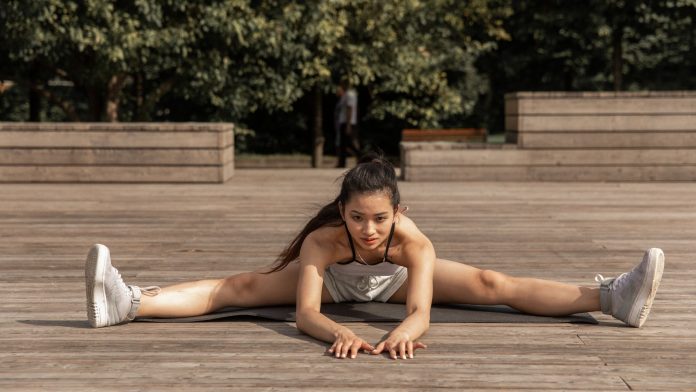When we talk about Flexibility it is one of the crucial components of reasonable physical health. Through time, our body may forfeit flexibility rightful to aging, a passive lifestyle, anxiety, or inappropriate stance and movement patterns. Being physically capable doesn’t bring about you being better at yoga. A handful of people can put their paws behind their heads in their very first yoga class. Others may exercise for years and never reap that posture. They may recollect getting satisfied with the notion of releasing their extension to that posture or any posture. We need to defy our bodies to do stuff that is hard because it perceives it reasonable to rise to a challenge. If we attain we shift to the next level, and if we flunk we discover how to move on with that, finding out the method is as important as the commodity. We memorize to breathe deeply when fibbing on our backs and when standing on our heads and this is the very purpose of advanced asana postures.
Also read: Significance of Yoga During this Pandemic
So started as a beginner and going through the intermediate phase you may have learned how to control your breath movement, now these advanced postures will help you to polish your all initial postures and will provide more flexibility and energy to your body. In this article, we will learn the top 5 advanced postures for experts and professionals.
Five Advance Level Yoga Poses
- Crane Pose (Bakasana)
- Split Pose (Hanumanasana)
- One-Legged King Pigeon Pose (Eka Pada Rajakapotasana)
- Two-Legged Inverted Staff Pose (Dwi Pada Viparita Dandasana)
- King Dancer Pose (Natarajasana)
1. Crane Pose (Bakasana)
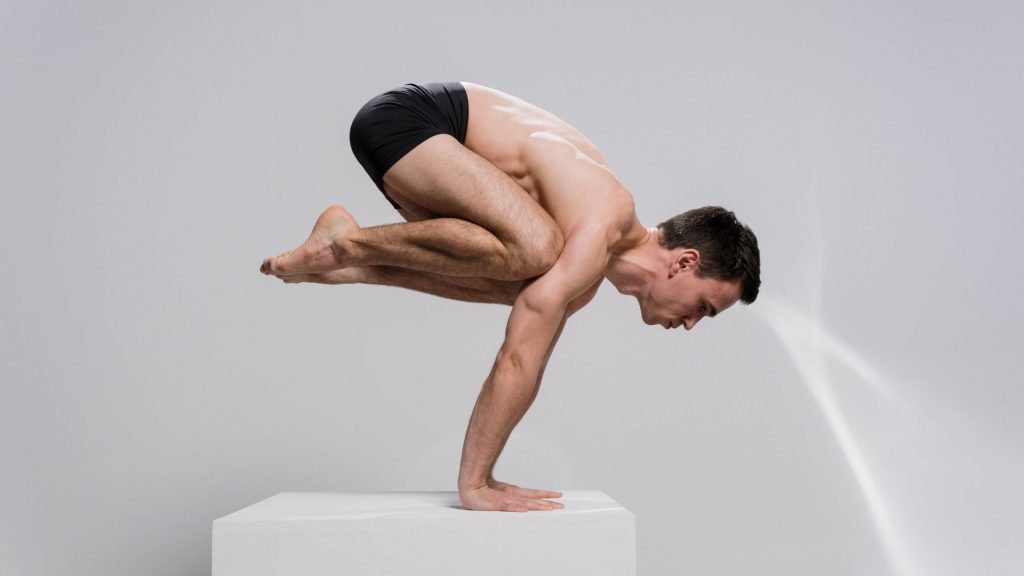
How to practice this posture:
For practicing this pose, place your both hands on the mat quickly below your shoulders. Scatter your fingers broad with grip fingers edging ahead. Now Lift the pelvis slightly and stoop the elbows while swiveling your forearms in towards your midline. Try to have Lightly press your knees high against your triceps, near your armpits. Spread your shoulder blades wide and slowly shift your head. If you are not comfortable then you can also put a pillow or blanket beneath your cranium.
The usefulness of crane pose:
- Crow Pose maintains the wrist, forearms, and abdomen while sloping your upper back.
- It enhances balance and core strength.
Advice:
If you uncover the move hard, there are improvements you can use until you assemble your belief. Once you are competent at the posture, you can also add fluctuations, such as the side crow pose.
2. Split Pose (Hanumanasana)
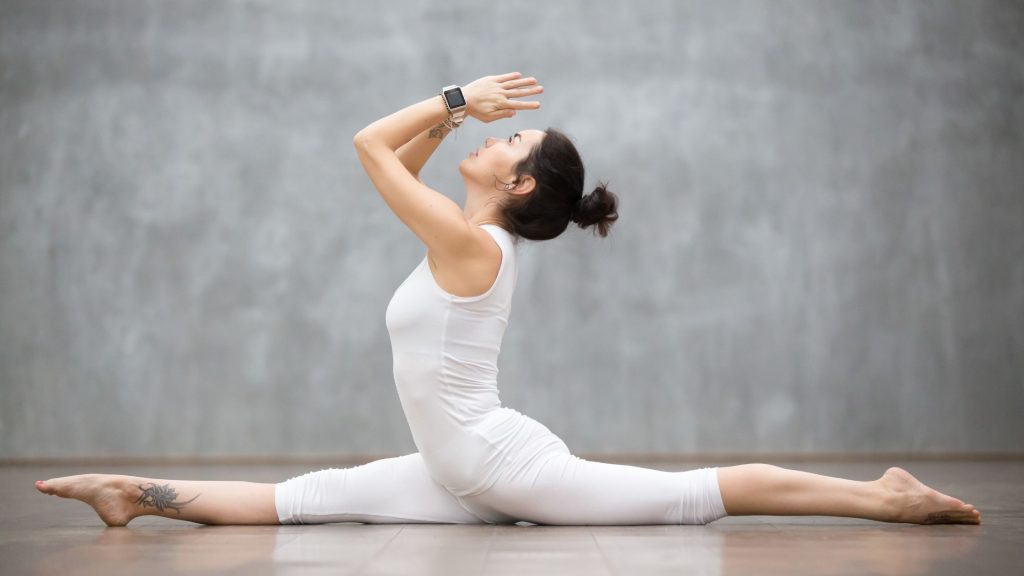
How to practice this posture:
For practicing the split pose you need to shift your torso up and position your fingertips rapidly below your shoulders. Angle your front foot and immerse your quad to insure your knee. Startup to slide the back knee back and the front heel ahead. If it does not touch the floor, grab a block or a folded-up sheet to brace it up. Square your hips as much as feasible by swiveling the inner thigh of the back leg up. Inhale to expand the spine and exhale to fold over the front leg bringing out your ribs and your navel. For additional assistance, keep your pointers below. If you want to make this posture more challenging then put in stretch your arms up above your head.
The usefulness of Split Pose:
- The posture helps strengthens and spreads your hamstrings, quads and groin stability
- Boosts hip flexibility when exercised regularly
- Spans the lower back muscles
Advice:
If you want some support then blocks, bolsters, and blankets are your friends here. Utilize them for assistance wherever desired. Hip openers and hamstring lengtheners will furthermore assist accumulate your flexibility. Splits are great for stretching your entire lower body. When exercised regularly, they can largely enhance your hip mobility.
3. One-Legged King Pigeon Pose (Eka Pada Rajakapotasana)
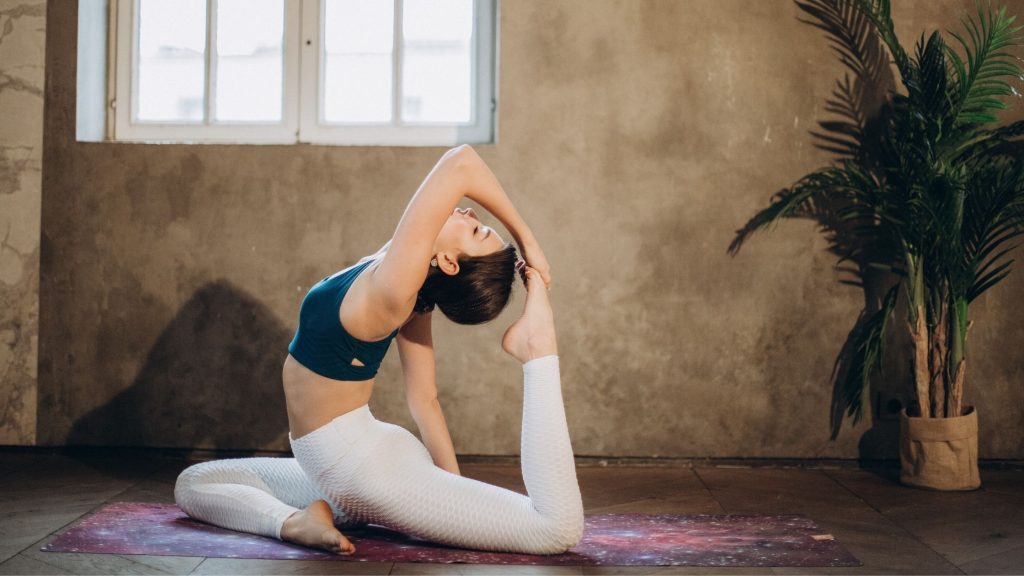
How to practice this posture:
One-legged king pigeon poses or we can say eka pada rajakapotasana is a tricky pose but you can easily achieve its with patience. For Ekas downward-facing dog, lift one leg tall off the floor and bend it at the knee. Change course forward and take the lifted leg to the carpet behind your hands, laying your shin down perpendicular to your body. Flex the ankle to protect the bent knee. Untuck the back toes and deeper down to the mat, assuring that your back leg is broadened in a straight line behind you. Square off your hips and bend your straight leg to a 90-degree angle. Braid your shoulder blades concurrently and down to draw the chest forth as you slowly gaze up towards the sky. Broaden your arms high and back, extending for your foot as you lengthen out your neck. To exacerbate the hip stretch, disclose your foot and fold forward, walking your hands out in front of you or coming down onto your forearms.
The usefulness of One-Legged King Pigeon Pose:
- It helps you to Unlocks your chest and shoulders
- Sprawls your thighs, groin, hip flexors, abdomen and neck
- Enables the abdominal organs to work well.
Advice:
“One-legged king pigeon is a deep backbend and hip-opener that requires a lot of flexibility. With regular practice, you can royally enjoy the benefits of this pose.” Everyone’s hips are different, so listen to your muscles and only go as far as feels good in your body to avoid overstretching.
4. Two-legged Inverted Staff Pose (Dwi Pada Viparita Dandasana)
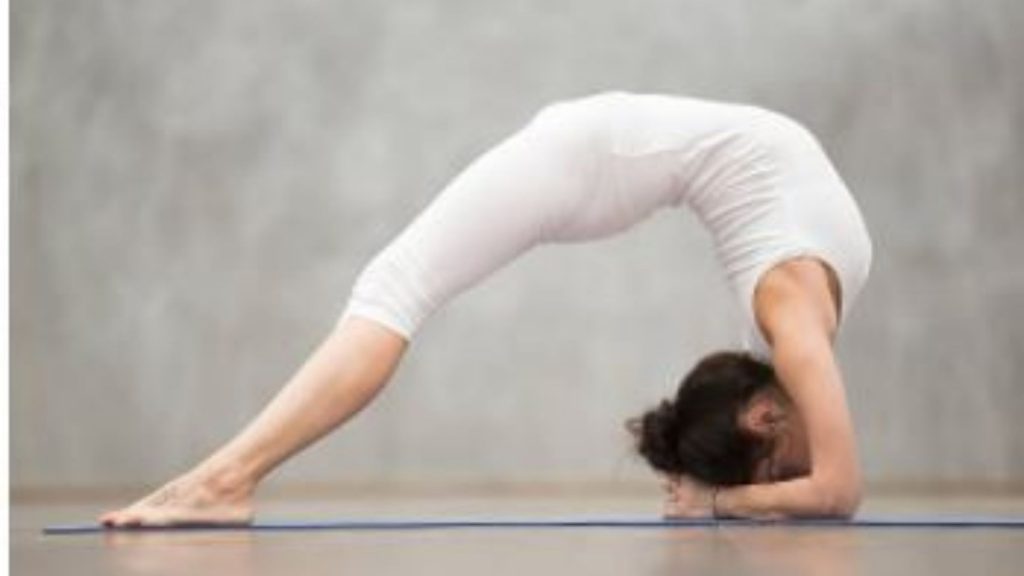
How to practice this posture:
Start-up on your back with your knees bent, feet hip-width apart, toes edging forward, and shins straight. Squeeze your glutes to hoist your hips up off the ground while raising your arms up above your head. Grain your palms next to your ears with your fingers pointing in. Nudge down through your hands and feet to heave your torso and lightly come onto the cap of your head. Lower one forearm down at a time and intertwine your fingers behind your cranium. Put together your elbows are instantly in line with your shoulders and reduction of everything in towards your midline. Shove down through your elbows and heave your head up off the floor, opening your chest and pressing out.
The usefulness of Two-Legged Inverted Staff Pose:
- Unlocks your chest, shoulders and hips
- Enhances and rhythms your upper and lower body
- Enriches lung capability and digestion
Advice:
Two-legged inverted staff is a vibrant posture that bestows you a deep backbend stretch. Be sure to warm up before endeavoring this posture. Flow-through bridge and wheel posture to de-stress your spine and shoulders.
5. King Dance Pose (Natarajasana)
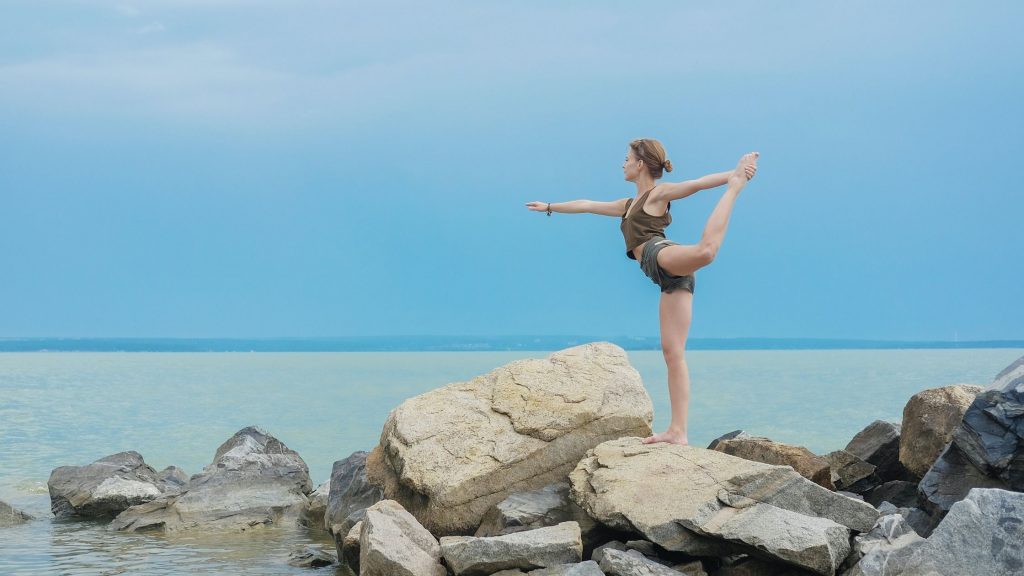
How to practice this posture:
Startup in a stature stance with your feet together. Draw the left leg up and try to move it towards your chest and commence to root down through all four nooks of your standing foot. Hoist the kneecap to immerse the standing leg quadriceps and shove your glutes to ascertain the pelvis. Clutch the ankle of your left leg with the equivalent sidearm. Begin to tip ahead and attain the left foot up and back behind you. Put up with your free arm and attain it back behind you, pulling onto the outside of the lifted left foot. Lift the foot up as you press the chest ahead and straighten your standing leg.
The usefulness of Dancer Pose:
- Unlocks your chest, shoulders and hips
- Enhances legs and ankle endurance
- Broadens equilibrium and flexibility
Advice:
Bestow it an attempt if you feel like your position could use a refresh. To retain your balance, don’t look down. Concentrate on a static object at eye phase a few feet in front of you.
Read:


